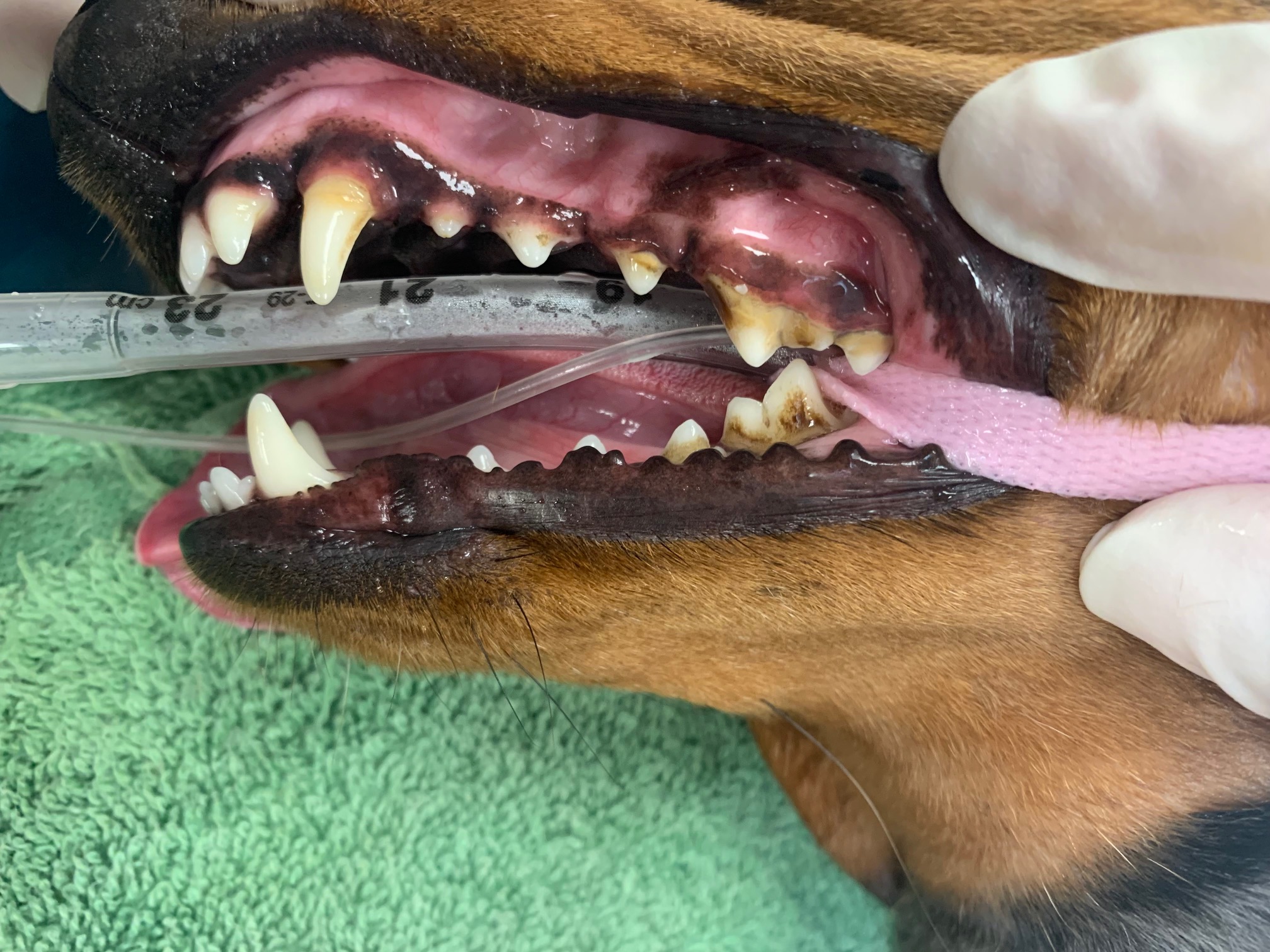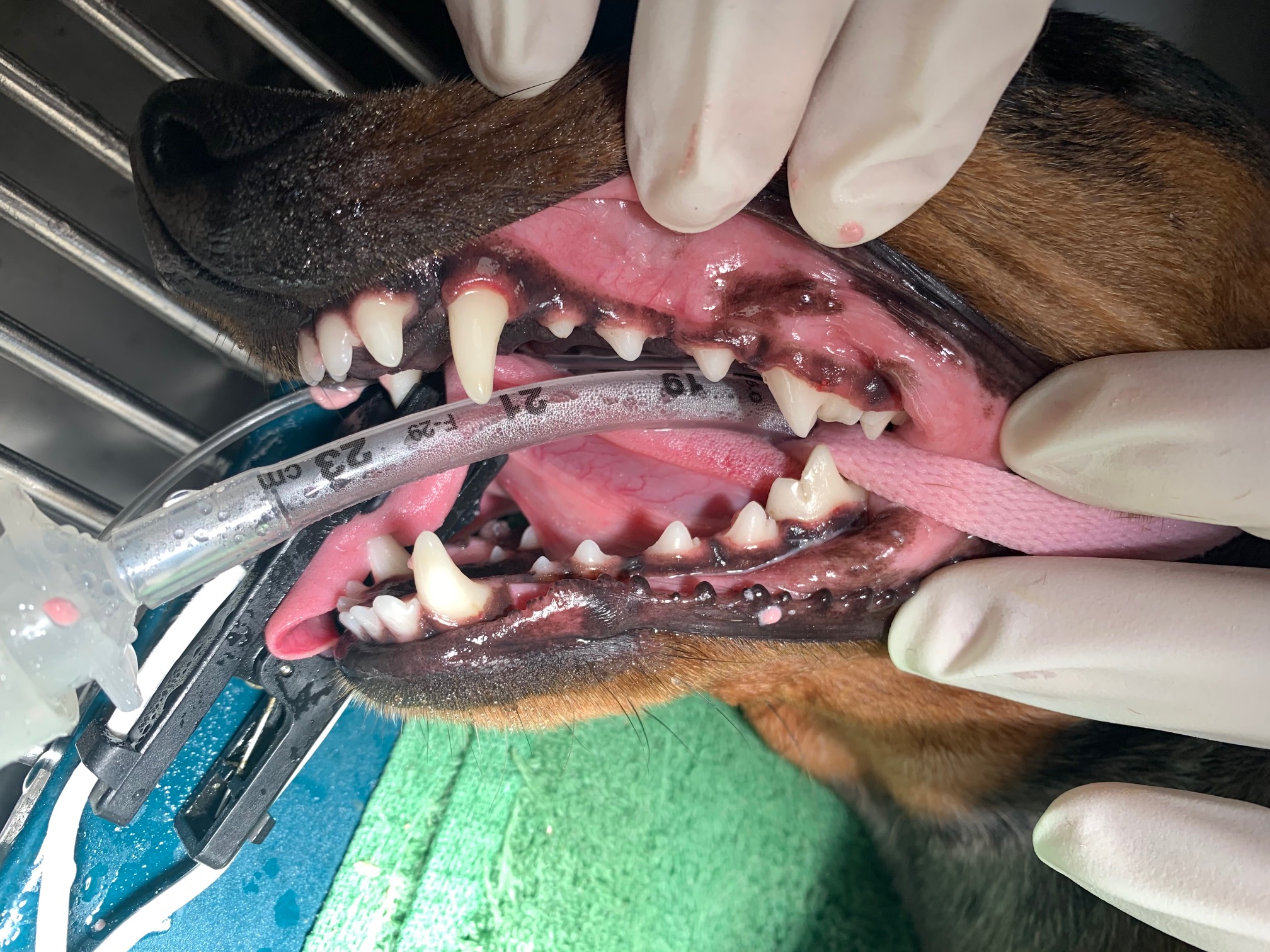Did you know that over 80% of dogs over age 3 have evidence of dental disease? Yes, it contributes to “doggie breath” – and not only that: it may even lead to more severe health issues if left untreated.
Symptoms of Dental Disease in Dogs:
The signs of dog dental disease might not be noticeable initially but may become more apparent as it progresses. Here are some signs to look out for:
1. Bad breath or change in mouth odor
2. Red, swollen or bleeding gums
3. Difficulty in eating or loss of appetite (or only chewing with one side of the mouth)
4. An increase in salivation
5. Loose or missing teeth
6. Pain around the mouth or jaws.
Causes of Dental Disease in Dogs:
There are a few different causes of dental disease in dogs, and some of them include:
1. Lack of Dental Care: Just like humans, dogs require regular dental examinations and cleanings.
2. Chewing on too hard toys: We often see broken teeth in larger dogs as a result of chewing on hard bones or toys. Broken teeth are painful and can lead to infection under the gum
3. Age: As dogs age, they are more prone to the build up of tartar and subsequent dental disease.
4. Genetics: Some dog breeds are more susceptible to dental issues than others. Dachshunds, brachycephalic breeds (i.e. frenchies and bostons), and other small or toy-breed dogs have less space in their mouth and build up tartar faster than large breed dogs.
5. Other causes: High fevers in puppies can cause enamel issues in developing teeth, and sometimes teeth that don’t come in are retained and will cause issues later in life.
Treatment of Dental Disease in Dogs:
Treatment for dental disease typically depends on the severity of the condition. If the disease is caught in the early stages, it may require some simple changes such as regular brushing, good quality dental chews, and better oral hygiene habits. It is best to start these measures as a puppy and get into good habits. Severe cases require the attention of a veterinarian, and often need anesthesia, scaling, and tooth extraction.
Prevention of Dental Disease in Dogs:
There are few preventive measures that can be taken to ensure a dog’s oral health stays in good shape. It’s important for dogs to have regular dental check-ups, especially after the age of two. Brushing your dog’s teeth once a day and regular use of dental chews and toys designed for dogs to help maintain oral hygiene can help maintain dental health. Yearly dental cleanings and x-rays, before the gums start to recess are the best maintenance you can do.
While dental disease is common and can cause significant discomfort for dogs, by being aware of the symptoms and taking preventive measures, you can help ensure the best possible prognosis for your furry friend’s oral health.



